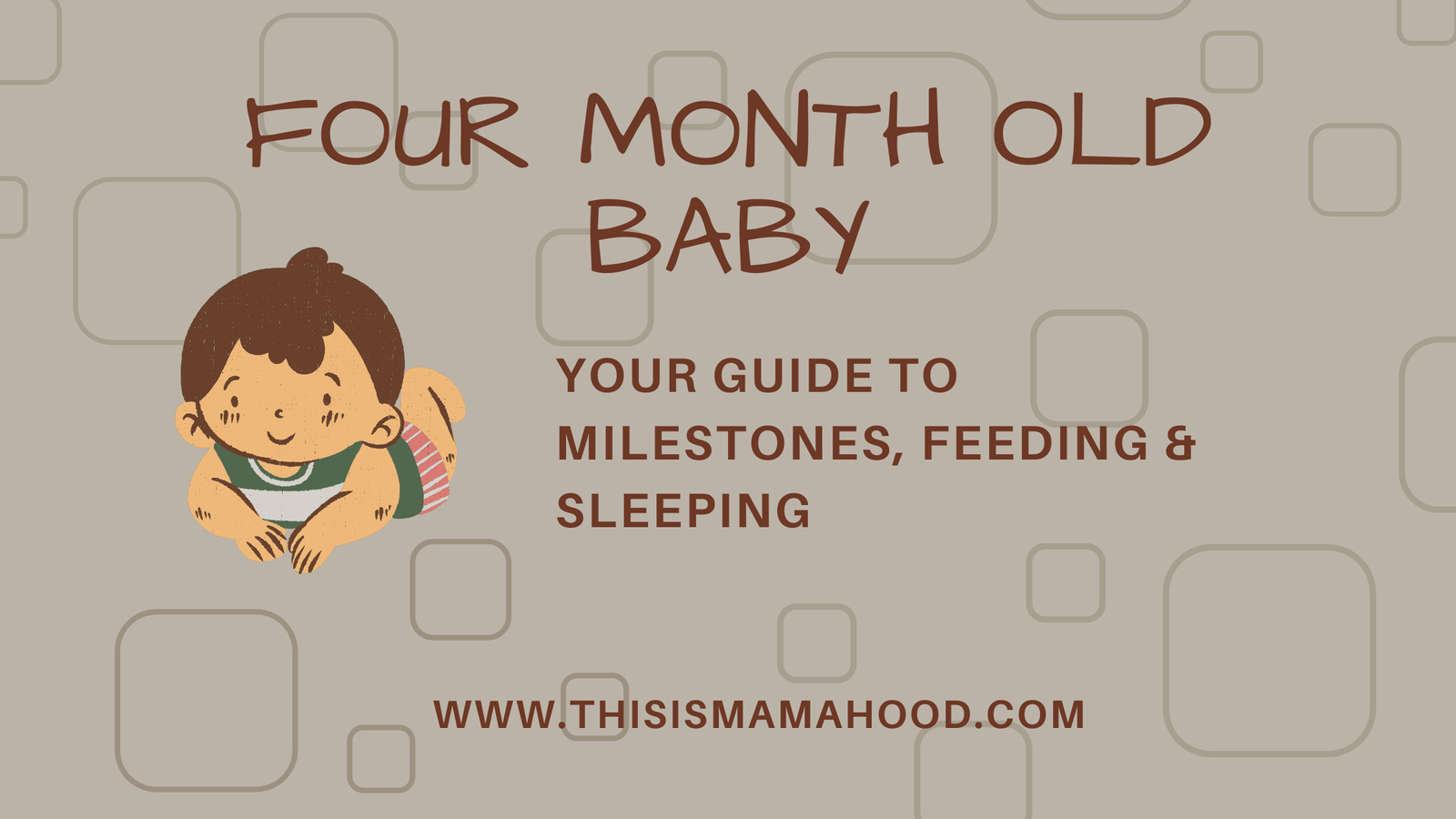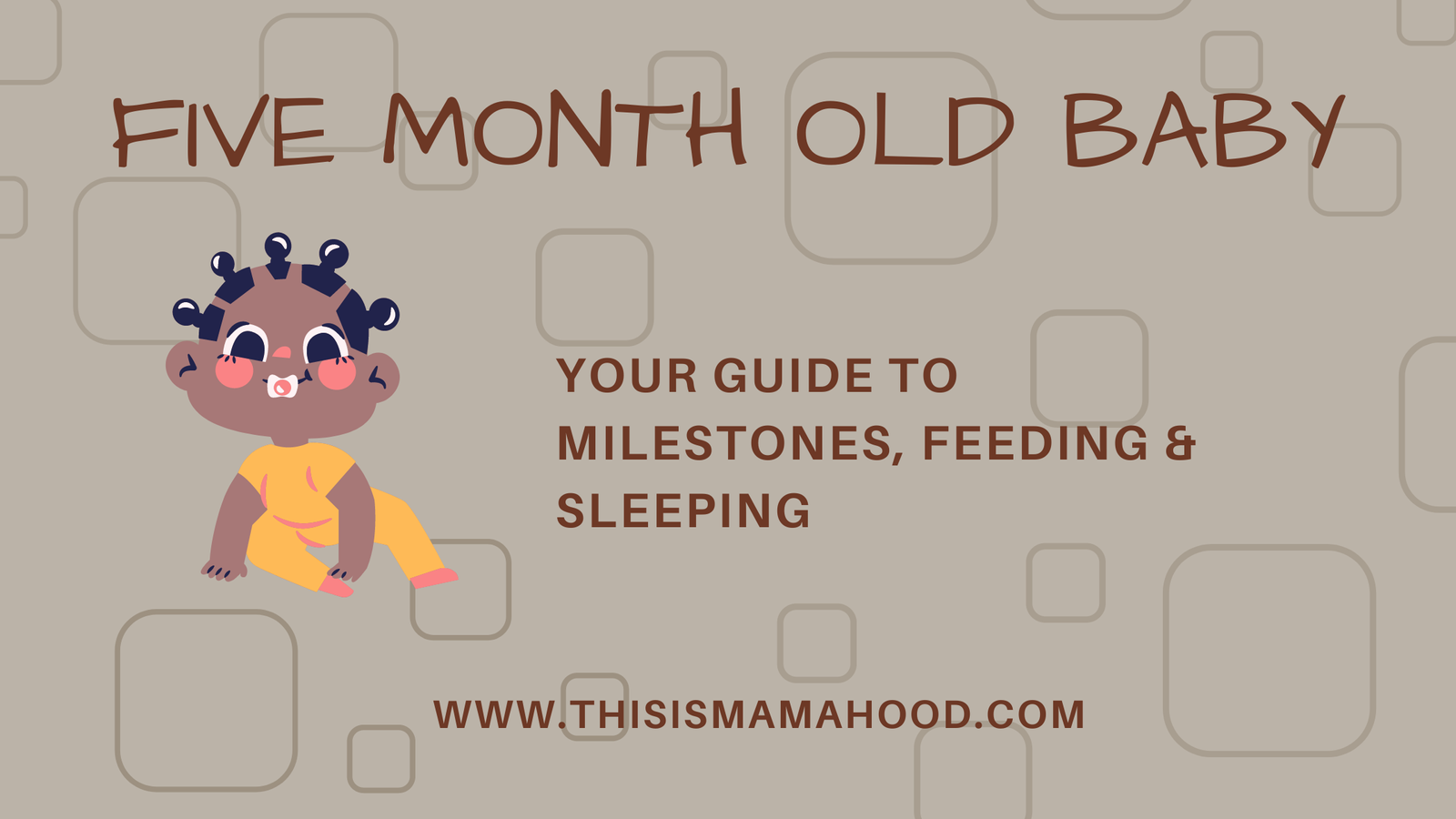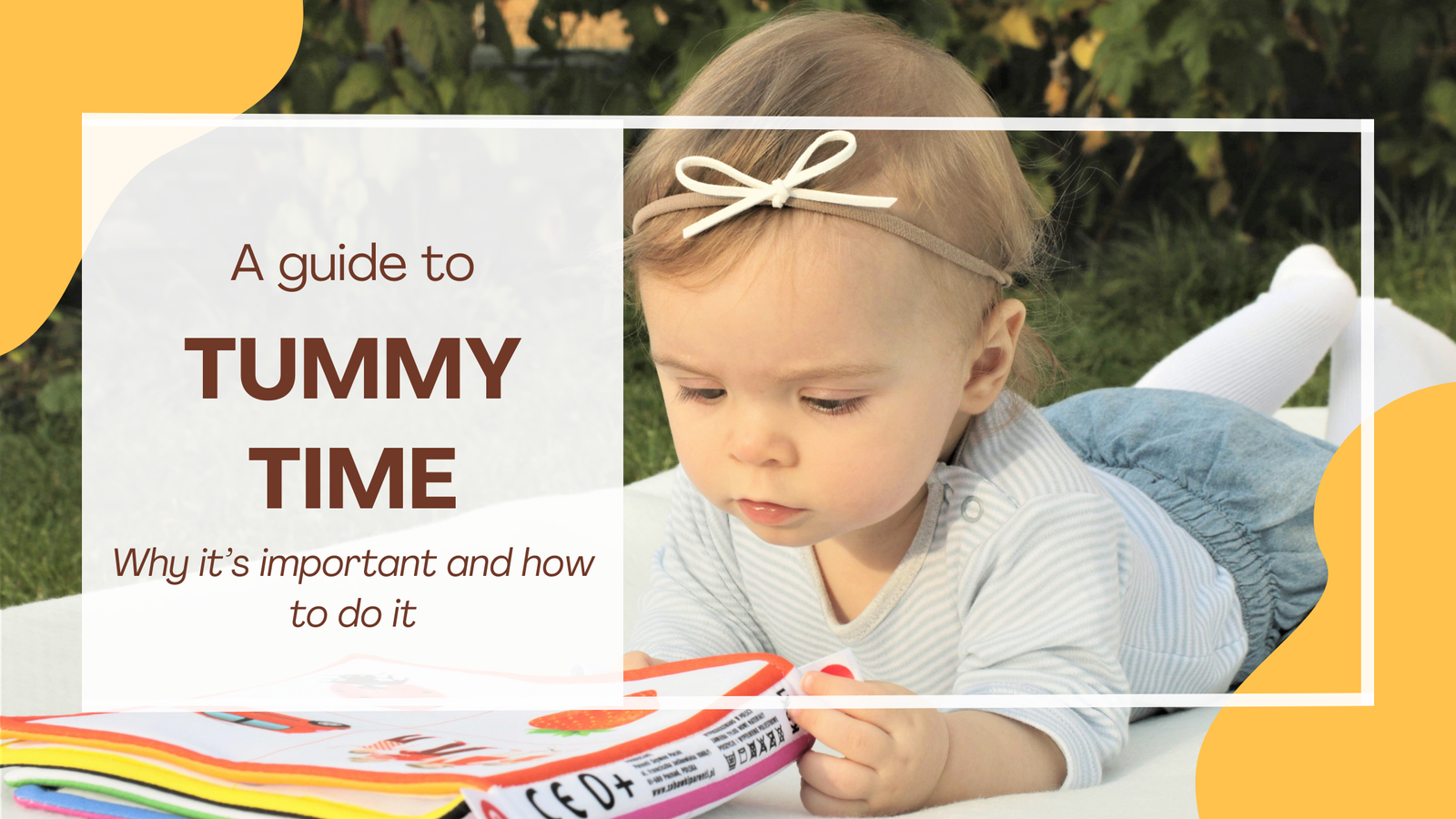Having a four-month-old baby is full of fun times. After all the hard work you have been putting in over the last four months, it will really start to be worth it now. Your little one is smiling and laughing, and even starting to play more with you. You are already going to start having those moments where you wonder how that little baby of yours has gotten so big, so fast. Enjoy these moments all you can.
Four-month-old baby milestones
Physical & movement
At four months old, your baby should be able to push up onto their arms while laying on their tummy. They will also be able to lift their head up and look around. Your baby may also start rolling from their tummy to their back around this time. Your baby should show good head control by now and should not need additional support while you hold them upright.
When playing, your four-month-old should be able to grasp and pick up items. They will also be able to reach their arms out in front of them in an attempt to reach for toys and other objects.
Communication
Your baby will be able to make different sounds with their voice. They should make cooing noises, like ‘ooh’ and ‘ahhh’. If you look at your baby and talk to them, you should hear them respond to you with different sounds. Your baby should also turn and look at you when they hear your voice.
Emotional & Social
Your four-month-old baby should be full of smiles by now and they will be using those smiles to get your attention. Your little one should also start to share some laughs with you, so be sure to make all the funny faces and noises you can think of.
Sleeping guide for a 4-month-old baby
Your four-month-old baby should be sleeping around 15 hours each day. Most of this sleep, about 10-12 hours, will happen at night. While some babies will sleep the whole night, you may find that your baby still wakes a couple of times at night for a feeding. This is completely normal and nothing to be concerned about.
You should expect the other 3-5 hours of sleep to be spaced between two or three naps during the day. Your baby’s wake window should be about 1.5-2.5 hours long.

Feeding guide for a 4-month-old baby
How much should my 4-month-old eat?
Your baby should be settling into a pretty consistent feeding schedule by now. If you are breastfeeding, continue to feed on demand. However, you should expect your sessions to be every 3-4 hours during the day.
If you are formula feeding, your baby should be expected to feed every 4-5 hours. At each feeding, they will be drinking around 4-6 ounces.
What should my 4-month-old eat?
You should wait until your baby is at least 6 months old before you start to feed them anything other than formula or breastmilk. However, older recommendations, as well as some doctors, may tell you that you can start feeding your baby solids at 4 months old. There are a few things to take into consideration before giving your baby solid food. Ask yourself these questions to decide if your baby is ready:
- Can your baby sit up alone or with support?
- Is your baby able to control their head and neck?
- Does your baby open their mouth when food is offered?
- Does your baby bring objects to their mouth?
- Does your baby try to grasp small objects, such as toys or food?
If the answer to any of these questions is no, then your baby is not ready for solid foods and it is best to wait. It is highly recommended that the answer to all of the above questions is yes, as well as your baby reaching 6 months of age, before giving your baby anything other than formula or breastmilk.
How do I play with my 4-month-old?
At four months old, time with your baby will be all about playing. They should be full of smiles and giggles and they will be starting to reach for and grab toys. Playtime will now start to be a little more interactive.
Continue to sing and read to your baby. This will encourage their speech and language development. Make sure to talk to your baby as much as possible during the day. Don’t know what to talk about with a baby? That’s okay, all you have to do is narrate everything you do. Think: “Mommy’s going to pick you up now”, “Mama is washing the dishes; look at the bubbles”. When your baby coos and babbles at you, mimicking those sounds and talking back will further encourage their communicative development.
Your baby is starting to reach for and grab toys, so be sure to lay toys out in front of them during tummy time. This will help to strengthen their core and neck muscles, as well as get them moving, as they reach their little arms out in front of them. When laying on their back, use a playtime mat that allows toys to dangle above them.
Health checks & vaccinations
Your baby will have a four-month well check at their doctor’s office. During this appointment, their length and weight will be recorded and compared to previous records to ensure they are growing well. They will also have a physical examination. This will include checking their eyes, listening to their heart and lungs, and checking their hips. Your doctor will also ask questions to make sure your baby is meeting all of their developmental milestones. Make sure that you go over any questions that you may have with the doctor.
Your baby will also be due for their second round of vaccinations. At four months old, your baby will receive the following vaccinations:
- Diphtheria, tetanus, and whooping cough (pertussis) (2nd dose)
- Haemophilus influenzae type b disease (2nd dose)
- Polio (IPV) (2nd dose)
- Pneumococcal disease (2nd dose)
- Rotavirus (2nd dose)
Vaccines will be administered via a needle in the thigh. Some babies may experience a slight fever in response to the vaccination. This is a common side effect and can be treated with children’s Tylenol.
It is important to discuss with your doctor the need for vaccinations in babies and if vaccinating your baby is the right choice for your family.
Schedule for a 4-month old
Now that your baby is doing more of their sleeping during the night and having longer wake windows during the day, it is the best time to start a schedule. Remember, not to be too strict with yourself and the schedule. Don’t stress out if you don’t follow it minute by minute. Schedules are rough estimates of the activities that you will do each day.
You can start having activities throughout the day that remain generally the same throughout the week, such as taking a walk in the morning or reading books in the afternoon. If you don’t already have an established nighttime routine, now would be a good time to start.
Below is an example of a typical schedule for a 4-month-old baby. Adjust the times based on when your baby wakes in the morning and when they go to sleep. You can fill the playtime slots with any activities that you feel fit.
7:00 am: wake up routine: diaper change, get dressed, cuddles, etc
7:30 am: feeding
8:00 am: playtime – tummy time
8:30 am: naptime
10:00 am: feeding
10:30 am: playtime – go for a walk, read some books, etc
12:00 pm: naptime
2:00 pm: feeding
2:30 pm: playtime – play mat, tummy time, etc
3:30 pm: naptime
4:30 pm: feeding
5:00 pm: playtime – cuddles, talking to your baby, peek-a-boo, etc
6:30 pm: bedtime routine: bath, pajamas, story, etc
7:00 pm: feeding and place down for sleep




